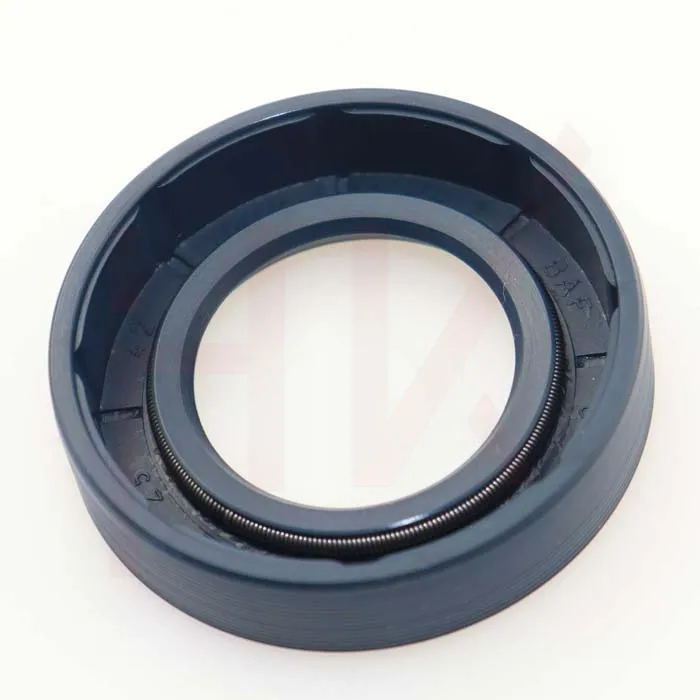Aug . 16, 2024 16:51 Back to list
Choosing the Right Oil Seal for Your Motor Applications and Performance
Oil Seal for Motors Importance, Types, and Maintenance
Oil seals, commonly referred to as shaft seals or fluid seals, play a critical role in the protection and efficiency of motor systems. These seals are essential components in many mechanical applications, as they prevent the leakage of lubricants and protect the motor from contaminants such as dust, dirt, and moisture. Understanding the significance of oil seals, their types, and maintenance practices can help ensure the longevity and performance of your motors.
Importance of Oil Seals
In a motor, oil seals are designed to retain lubricant oil within the system while preventing external substances from entering. This is crucial because proper lubrication reduces friction between moving parts, thereby minimizing wear and tear. When lubrication is compromised due to leaks, the internal components can experience excessive heat and premature failure.
Additionally, oil seals help maintain the pressure within the motor's lubrication system. Proper pressure ensures optimal performance, reducing the likelihood of issues such as overheating or loss of power. Therefore, the integrity of oil seals directly influences the reliability and efficiency of motors, making them indispensable in automotive, industrial, and consumer applications.
Types of Oil Seals
Oil seals come in various designs, materials, and sizes, tailored for specific applications
. The most common types include1. Rotary Oil Seals These are used in applications where a rotating shaft is involved. They typically consist of a rubber sealing lip that engages the shaft to prevent oil leakage while allowing rotation. Commonly found in gearboxes and automotive engines, rotary oil seals are vital for maintaining lubrication.
2. Static Seals Unlike rotary seals, static seals are used in non-moving applications. They seal two stationary parts together to prevent fluid leakage. These seals are often made from materials such as cork, rubber, or elastomeric compounds and are widely used in engine components.
oil seal for motor

3. Dual-Lip Seals These seals feature two sealing lips, providing an extra layer of protection against dirt and moisture. Dual-lip seals are advantageous in environments where contaminants are a concern, such as in off-road vehicles or equipment exposed to harsh conditions.
4. Specialty Seals For unique applications, specialty seals such as spring-energized seals, PTFE seals, or custom-engineered seals may be used. These seals can withstand extreme temperatures, pressures, or chemical exposure, making them suitable for specialized motor applications.
Maintenance and Replacement
Regular maintenance of oil seals is essential to ensure their effectiveness. Here are some tips for maintaining oil seals in motors
1. Regular Inspection Periodically check the oil seals for signs of wear, such as cracks, tears, or hardening of the material. Early detection can prevent more serious issues down the line.
2. Proper Installation Ensure that oil seals are installed correctly to avoid premature failure. Follow manufacturer guidelines regarding tools and techniques for installation to avoid damaging the seal during the process.
3. Monitor Fluid Levels Keeping an eye on oil levels can help you detect leaks early. If you notice a drop in fluid levels, it may indicate an oil seal failure.
4. Replace as Needed If an oil seal shows signs of damage or begins to leak, it is essential to replace it promptly. Delaying replacement can lead to more significant engine problems and costly repairs.
In conclusion, oil seals are crucial components of motor systems that help maintain optimal performance by preventing lubricant leakage and protecting against contaminants. By understanding the types of oil seals, their importance, and maintenance practices, motor operators can ensure their equipment runs smoothly and efficiently, ultimately prolonging its lifespan. Regular monitoring, proper installation, and timely replacement of oil seals will help avert issues, ensuring the reliability and functionality of motors in various applications.
-
Reliable Oil Seal Wheel Hub Solutions for Industrial & Automotive Use
NewsNov.17,2025
-
Durable Front Hub Oil Solutions for Industry – HKAiSeal
NewsNov.17,2025
-
Wholesale Hydraulic Pump Motor Seal Kit A4VSO250 | In Stock
NewsNov.17,2025
-
Pump Seal Kits: Essential Components for Industrial Reliability
NewsNov.17,2025
-
TCV Oil Seal - Double-Lip, Spring-Loaded, High Temp & Wear
NewsNov.17,2025
-
Hydraulic Seal Kits: Reliable Solutions for Industrial Equipment
NewsNov.17,2025
-
Combined oil seal 659214 12001903B, fits 119990, NBR OEM
NewsNov.17,2025
Products categories
















